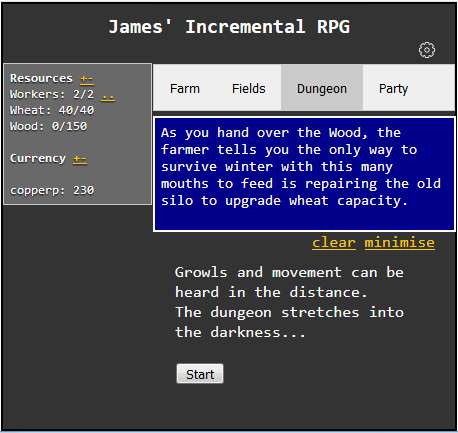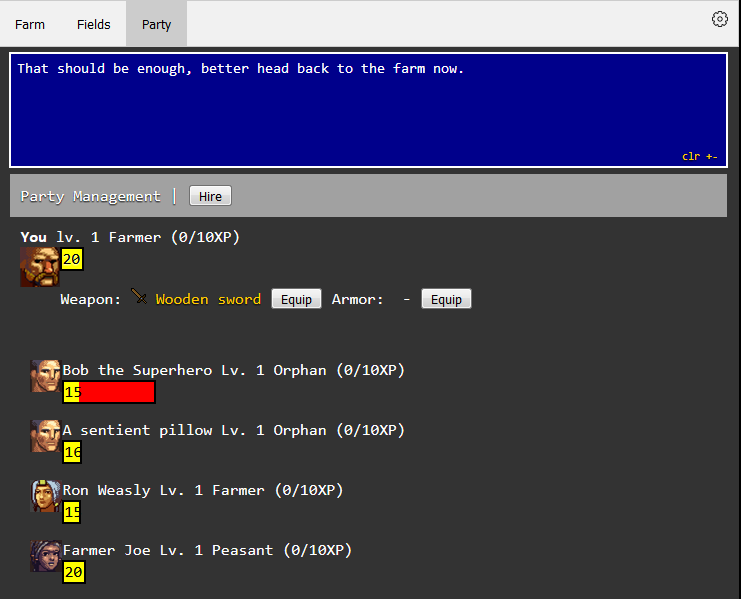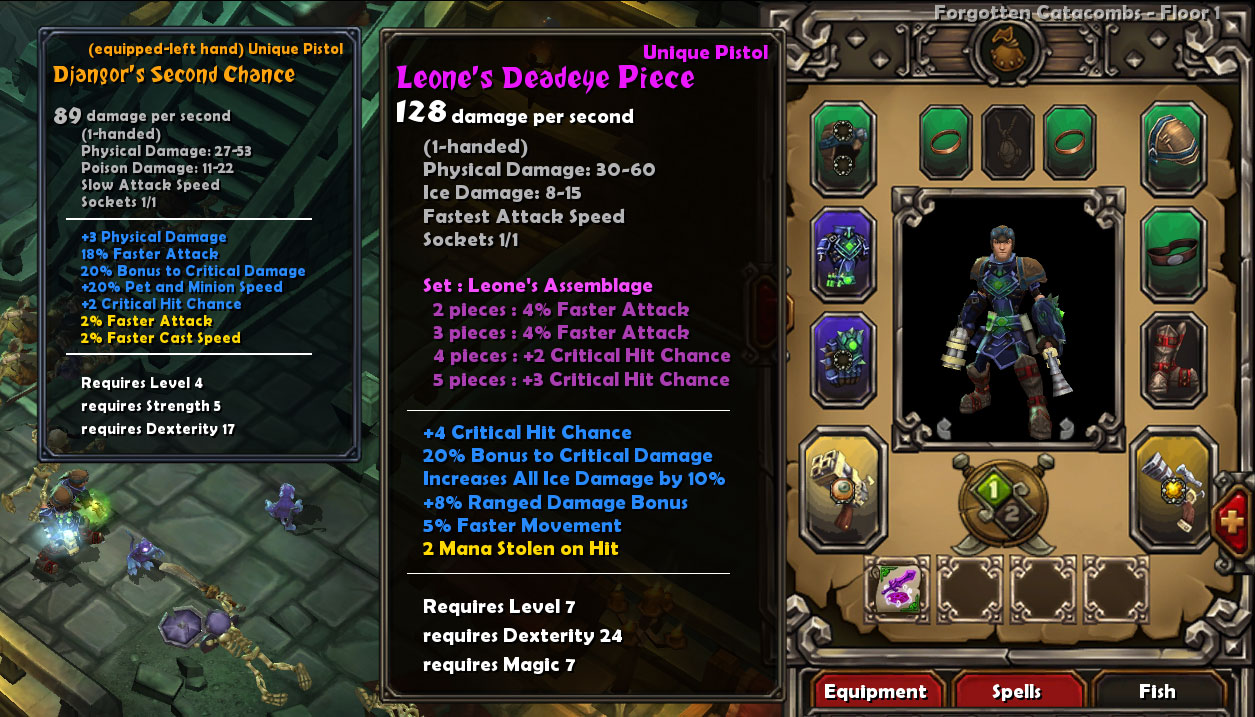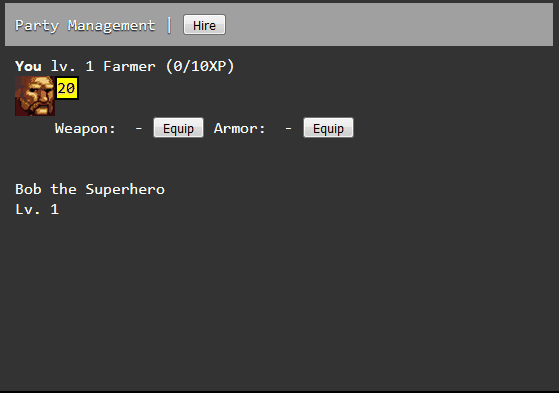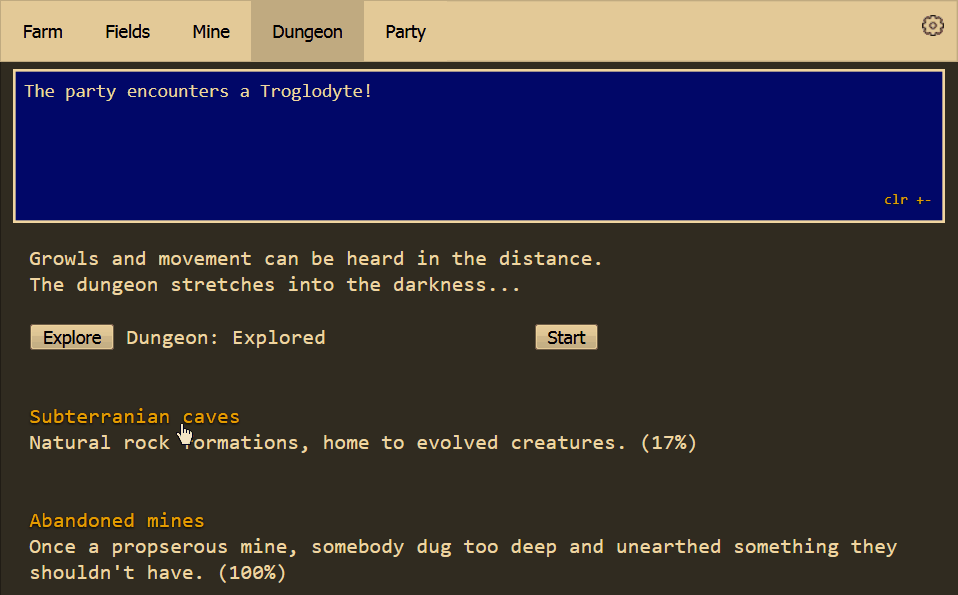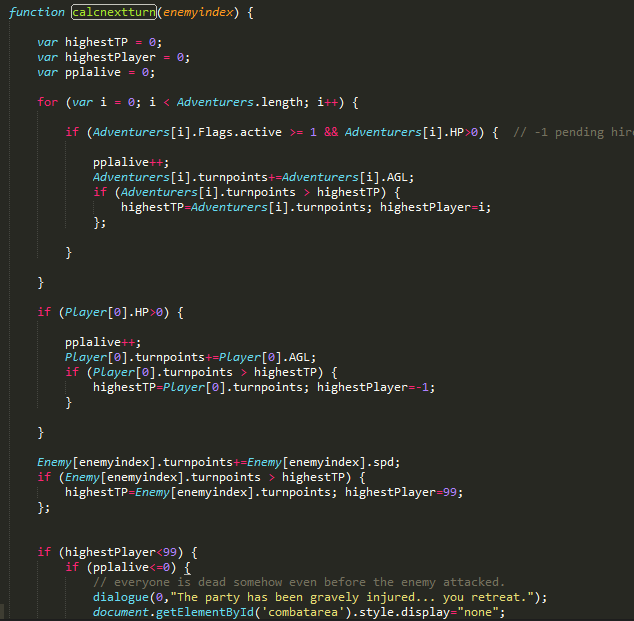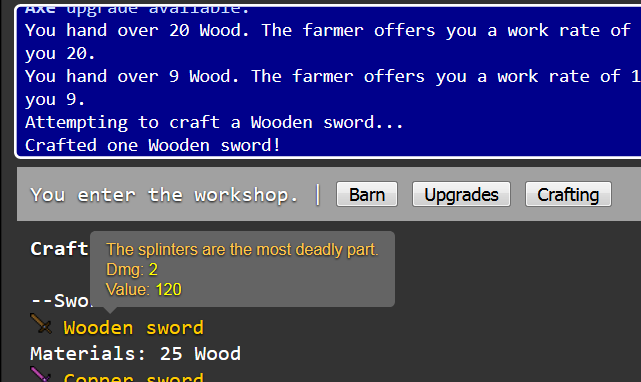This is my first game and jam and I am working on an old text-based RPG which is inspired by incremental type games! It will be a simple browser-based game using Javascript and HTML.
I
grew up on old school RPGs, a lot of old text-based ones on ye olde DOS
screen. I've been blogging about modern retro-style games at https://newretrogames.wordpress.com/.
Lately, though, I've had a strange addiction to idle, clicker
and incremental games - whatever way you want to categorise them. I
always felt these two concepts could tie together and always wanted to make a game, so here I am.
Update 1: Avoiding Ridiculous Numbers
Update 8: Crafting, Farming, Skills & Currency Exchange
Update 9: Live Preview Online!
Objectives
I'm not aiming for the style of "big players" like AdVenture Capitalist and Cookie Clicker, rather, more earlier simple proginetors like Candy Box and A Dark Room. Later on, Kittens Game came along, which despite the title, is an unforgiving and detailed village building sim, from the stone age to the space age, with everything from mining for ore and smelting it into bars, to building oil refineries and travelling to other planets. Mine... won't be quite that advanced.
I set out some goals:
- More than just numbers increasing - as you progress open up new, different game modes such as RPG style exploring and combat
- Avoid ridiculous numbers - a challenge to keep that enjoyable sense of progression while keeping numbers "normal"
- A clear ending - there is a narrative with an end goal. You can "win" the game.
The Incremental Aspect
Pretty much every incrememnetal game sees you begin the same: clicking to gather resources, start buying helpers to automate the process, then buildings to produce new resources, which in turn unlock more resources and buildings. What these later examples do, however (particularly Candy Box and A Dark Room), is open up completely new gameplay avenues. In candy box, you begin clicking for candies then automating the process, but eventually, there's a world map and towns to explore, and a D&D style questing levels to beat. A Dark Room, similarly, started with clicking for resources, progressing to building a village, to opening up a world map to explore and conquer, complete with RPG style battles.
As the "genre" got popular, however, many of these games seemed to get more narrow-minded - click, automate, get bigger and bigger numbers, and need bigger and bigger numbers to build more.. and that's about it. Sure, there are cool thematic differences, and features like abilities/spells, which do things like boost production for a limited time. Or "prestiging", where you restart from scratch but the reward is some kind of global production % boost. These features, many which can be very well done and engaingly presented, these are stil all a means to the same end. Of which there typically is none.
The pursuit for bigger numbers starts to get ridiculous and lose meaning. A lot of games go into numbers I never knew existed as a matter of standard. Something gets lost between the feeling of gathering up 100 wheat bushels, and when you are flicking through 160 nonillion of the things per second. The tipping point for me came when an official D&D incremental game came out (I tried the beta). I never played pen and paper D&D but I did play the Goldbox games, where reaching level 20-30 is usually "godlike". Early into the game however my characters' levels were already well past the 100s. That's just wrong for a official D&D game.
SO... not seeing the kind of new incremental emerging that I want,
eventually I decided to put my money where my mouth is and try my hand
at making my own that would fulfil my desires.
The RPG aspect
The game I decided on is a RPG style guild game, where you begin as a poor farmer with dreams of escaping poverty, to managing a guild of adventurers and sending them on missions. Meanwhile in the background, some dark forces are closing in, meaning your guild will eventually play an important part in the fate of the world.
Using this archetype of tropes gives a lot of room for fulfilling all the objectives, hopefully.
It will begin similar to many incremental games, where you gather resources on the farm, slowly improving your lot. Stumbling across an abandoned mine, you get the chance to improve your fortunes, expanding the resource gathering. Deeper inside the mine, you find the reason it was abandoned: it leads into a dungeon where monsters lurk. This opens up the RPG style adventure and combat section. You find hints of valuable treasure inside, but as the dungeon gets too dangerous you realise you need to hire professionals, and start with a new (cheap) adventurer. This is the first step of the "management" aspect, where you eventually have a full team of adventurers. As the game expands, the needs of your adventurers and quests, and this demands for your resources increases, and some light city building elements can also come into play.
Conclusion
This plan should hopefully give the game more to do than just increasing numbers, as progress will be measured in dungeon and story as well as resources. The resource gathering, town building, adventure managing and dungeon delving should give it a good mix, hopefully. The narrative can easily build up to an end game, with a final dungeon.
All this will be kept within simple text-based minimalistic gameplay, so hopefully, at least a working prototype is achievable!




 The very first iteration
The very first iteration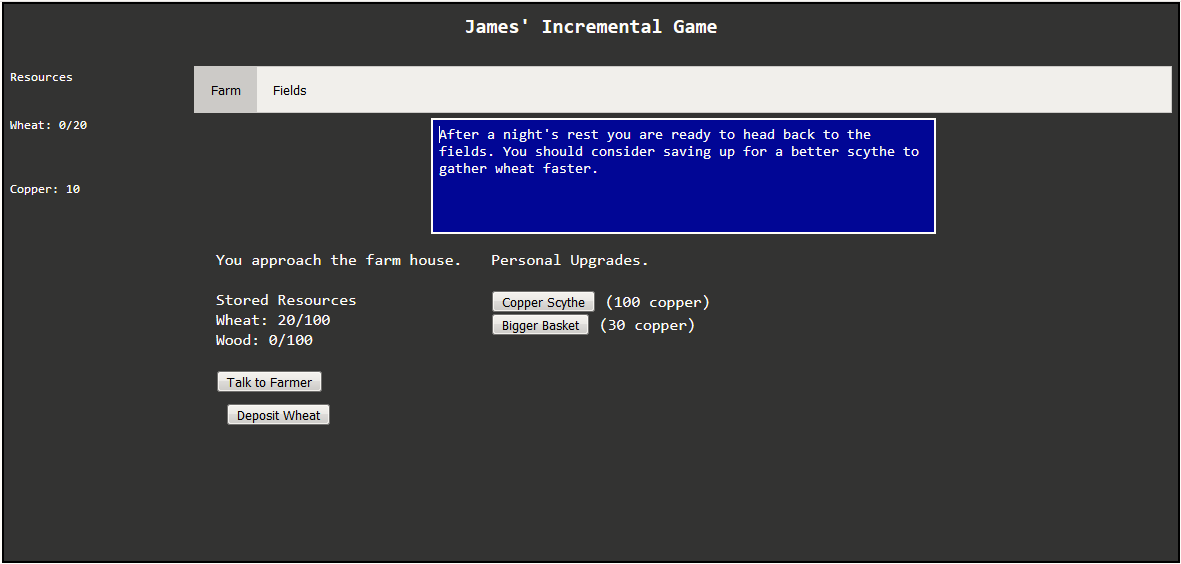 The next iteration, looking slightly less terrible
The next iteration, looking slightly less terrible


